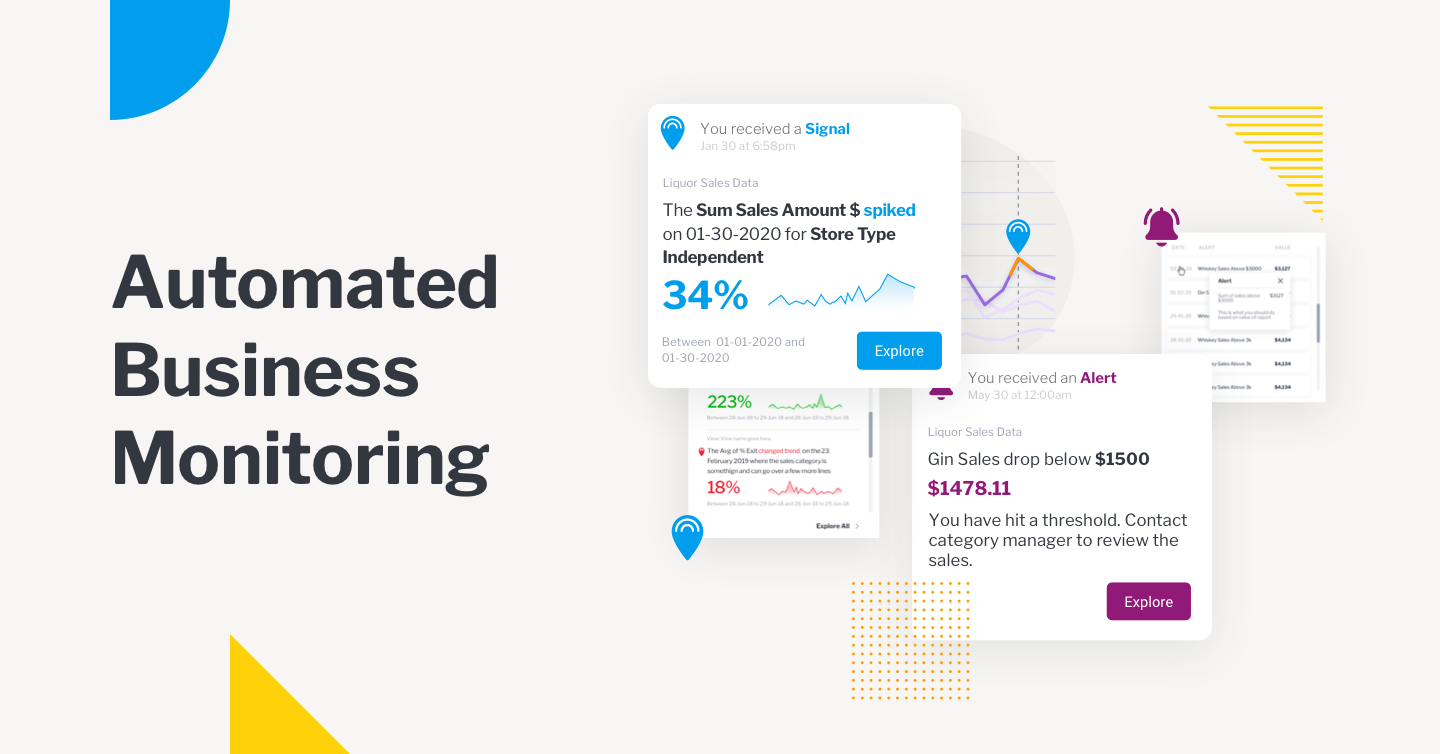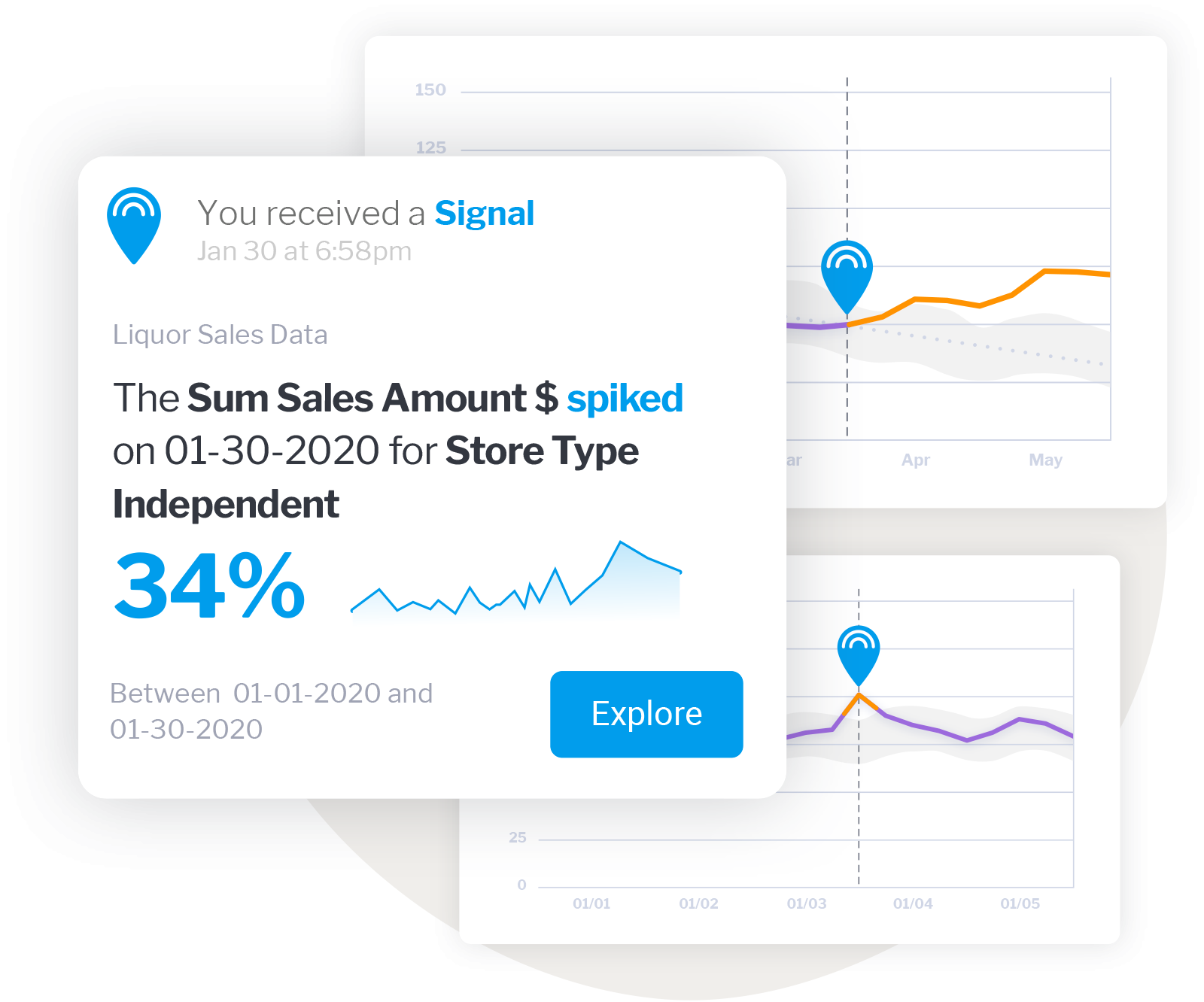
Automated business monitoring: Why you need it now
One of the things we've done a lot of work on at Yellowfin is automated business monitoring (ABM), specifically with our product Yellowfin Signals. It can truly transform organizations and help them to deliver insights faster, ones they can react on. ABM has been in the market for about five years but we haven't seen it take off just yet.
One reason is that automated business monitoring challenges the status quo of the data analyst. Fundamentally, products like Signals automatically slice and dice vast amounts of data and look for changes, trends, spikes and troughs. This helps organizations to quickly identify the changes in their business that they need to react to.
Historically, you employed a data analyst to do what Signals does in a fraction of the time. Now, that was fine when there were minimal data sources and smaller data volumes. But organizations now have highly complex data sources. It's impossible for humans to monitor businesses effectively and it can be monotonous and leads to human error. So you want to take what a data analyst did historically and automate it. But that’s a challenge when you’re trying to sell the product to a data analyst.
It's time for Automated Business Monitoring
Rather than seeing it as something that really helps them to do their job, data analysts see automated business monitoring as something that could potentially undermine them. But the reality is that automated business monitoring adds value to the job of a data analyst because you still need people to provide context to data and join the dots.
One reason why automated analytics hasn’t taken off is the interfaces. Many vendors have missed the mark in terms of the true audience for the product. While the interfaces were designed for someone who has a deep love of working with data, the data needs to be delivered to business users. It should guide the business user through what happened, why it happened and what they should do about it.
Lastly, I think a lot of organizations today haven't yet solved their basic needs for analytics and data. To them, automated business monitoring looks like something that's just way over the top - they’re not ready for it. This highlights the fact that a lot of organizations are not data driven.
Recently, I had a conversation with one of the world's biggest retail brands and they essentially ran their business on spreadsheets. The opportunities for their business is endless with automated business monitoring. This business had a phenomenal quarter that they hadn’t planned for and their inventory ran out. With automated business monitoring, they could have done way better because they would’ve known in advance what was happening in their business.
For automated business monitoring to work effectively for businesses, there are three things that really need to change now. Businesses are complex and in the current environment, they want to really know what's gaining momentum and what's slowing down so they can plan their business accordingly. The earlier they can get a sense of that the earlier they can react.
Read more: How Businesses Use Automated Business Monitoring in 2021
Re-thinking the value of automation in your analytics
Firstly, vendors have to rethink the whole problem. We're not solving the problem for data analysts - we're solving the problem for the business. We’re also selling to business users not data analysts, so we really have to think about their needs, wants and expectations.
We’ve also got to rethink our interfaces from a business users’ perspective, not the data analysts. That means we’ve got to make it super easy because business users aren’t prepared to slice and dice data. We're already starting to see a convergence around what automated business monitoring needs to look like for business people and I think we’ll end up with a common paradigm.
At Yellowfin, we’ve also thought about where Signals sits by integrating it into the normal paradigm for consuming analytics by using a dashboard widget. We've also got a mobile phone interface, and have introduced ways to integrate automated business monitoring through APIs into the applications that people use every day. So if a business user is in their supply chain tool, they can see signals about inventory there. It's all part and parcel of the same workflow.
Lastly, organizations need to really be feeling the pain because only then are they ready to make the leap. Unfortunately, right now we’re in an environment where we're seeing a lot of organizations who are interested in automating their business monitoring. They realize that they need to do more to maintain market momentum and be successful in the current environment.
Right now, businesses are looking for quicker, faster ways to do analysis so they can understand what’s happening and react faster. That's why I think now's the right time for automated business monitoring.

Free Whitepaper: Using Automated Business Monitoring Systems and Machine Learning to Analyze Business Metrics
Want to understand more about how automated business monitoring can benefit your business today? Download our free whitepaper from Eckerson Research Group today and understand just how much value automation technology in analytics can bring to your business in 2021 in beyond.